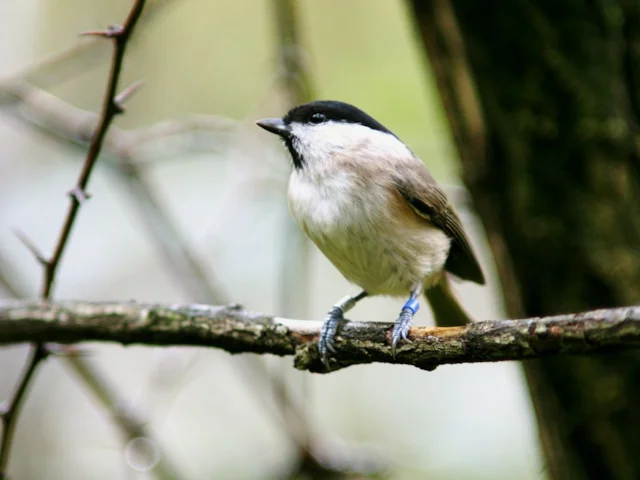Britain's oldest Marsh Tit found
11791bc3-db0f-4159-a23c-26779e87c007

Cumbria is officially home to Britain’s oldest Marsh Tit, after a bird ringed more than a decade before was seen near Haverthwaite.
Ringed at Roudsea Wood and Mosses NNR in the spring of 2003, the relocated bird is 10 years, four months and 25 days old, and this beats the previous British record for the species by some three months. Marsh Tit was once common in most woodland across the country, but is now sadly undergoing a rapid decline and has been lost from much of its former range over the past three decades.
Roudsea Wood, near Haverthwaite in south Cumbria, has been the research site for a detailed long term study of Marsh Tit for more than a decade, and evidence gathered on the survival dynamics of this population of birds is helping scientists to understand how they are able to live in the harsh conditions of the wild.
Ken Hindmarch, from Ulverston, who works on the project, said: “This is a fantastic record. The bird was first caught in 2003 as an adult female, and it has been regularly recorded at our ringing site over the last 10 years. That it was first caught and recorded as an adult female means she is even older than our records show.”
Nearly all of Roudsea Wood’s Marsh Tits now sport colour rings on their legs, as well as the standard British Trust for Ornithology metal ring. The colour rings are arranged so that each individual can be identified from a distance, even if they do not fly into the mist nets used by the ringers. This particular individual has a red-over-yellow combination on its left leg, easily seen by Natural England’s Steve Benn as he looked out of the National Nature Reserve office window last week and saw the bird close to a bird feeder.
Roudsea Wood’s veteran Marsh Tit has some way to go before challenging the European age record for the species which stands at 11 years and 11 months for a bird from Sweden, though it m,ay actually already be of this age if it were older than a year when it was first ringed as an adult. However, the research at Roudsea Wood has shown that these apaarently delicate little woodland birds are tougher than they look.
Ringed at Roudsea Wood and Mosses NNR in the spring of 2003, the relocated bird is 10 years, four months and 25 days old, and this beats the previous British record for the species by some three months. Marsh Tit was once common in most woodland across the country, but is now sadly undergoing a rapid decline and has been lost from much of its former range over the past three decades.
Roudsea Wood, near Haverthwaite in south Cumbria, has been the research site for a detailed long term study of Marsh Tit for more than a decade, and evidence gathered on the survival dynamics of this population of birds is helping scientists to understand how they are able to live in the harsh conditions of the wild.
Ken Hindmarch, from Ulverston, who works on the project, said: “This is a fantastic record. The bird was first caught in 2003 as an adult female, and it has been regularly recorded at our ringing site over the last 10 years. That it was first caught and recorded as an adult female means she is even older than our records show.”
Nearly all of Roudsea Wood’s Marsh Tits now sport colour rings on their legs, as well as the standard British Trust for Ornithology metal ring. The colour rings are arranged so that each individual can be identified from a distance, even if they do not fly into the mist nets used by the ringers. This particular individual has a red-over-yellow combination on its left leg, easily seen by Natural England’s Steve Benn as he looked out of the National Nature Reserve office window last week and saw the bird close to a bird feeder.
Roudsea Wood’s veteran Marsh Tit has some way to go before challenging the European age record for the species which stands at 11 years and 11 months for a bird from Sweden, though it m,ay actually already be of this age if it were older than a year when it was first ringed as an adult. However, the research at Roudsea Wood has shown that these apaarently delicate little woodland birds are tougher than they look.

